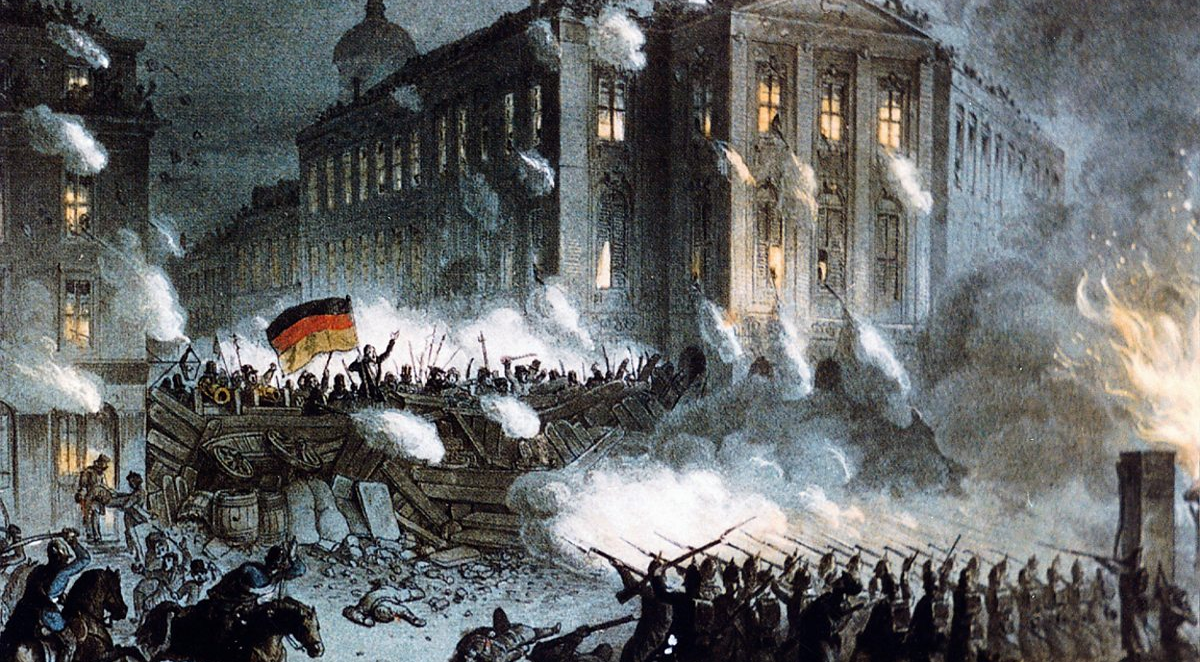Unit 21: Nationalism (1800s) Overview
Unit 21: Nationalism (1800s)

Unit 21: Nationalism (1800s)

Unit 21: Nationalism (1800s)
This unit emphasizes how the unification of Italy and Germany changed the balance of power in Europe and created many hostile relationships which led to World War I.
German nationalism began to stress instinct against reason; the power of historical tradition against rational attempts at progress and a more just order; the historical differences between nations rather than their common aspirations. The French Revolution, liberalism, and equality were regarded as a brief aberration, against which the eternal foundations of societal order would prevail.
That German interpretation was shown to be false by the developments of the 19th century. Liberal nationalism reasserted itself and affected more and more people: the rising middle class and the new proletariat. The revolutionary wave of 1848, the year of “the spring of the peoples,” seemed to realize the hopes of nationalists such as Giuseppe Mazzini, who had devoted his life to the unification of the Italian nation by democratic means and to the brotherhood of all free nations. Though his immediate hopes were disappointed, the 12 years from 1859 to 1871 brought the unification of Italy and Romania, both with the help of Napoleon III, and of Germany; at the same time the 1860s saw great progress in liberalism, even in Russia and Spain. The victorious trend of liberal nationalism, however, was reversed in Germany by Bismarck. He unified Germany on a conservative and authoritarian basis and defeated German liberalism. The German annexation of Alsace-Lorraine against the will of the inhabitants was contrary to the idea of nationalism as based upon the free will of man. The people of Alsace-Lorraine were held to be German by objective factors, by race, independent of their will or of their allegiance to any nationality of their choice.
In the second half of the 19th century, nationalism disintegrated the supranational states of the Habsburgs and the Ottoman sultans, both of which were based upon prenational loyalties. In Russia, the penetration of nationalism produced two opposing schools of thought. Some nationalists proposed a westernized Russia, associated with the progressive, liberal forces of the rest of Europe. Others stressed the distinctive character of Russia and Russianism, its independent and different destiny based upon its autocratic and orthodox past. These Slavophiles, similar to and influenced by German romantic thinkers, saw Russia as a future saviour of a West undermined by liberalism and the heritage of the American and French revolutions.
One of the consequences of World War I was the triumph of nationalism in central and eastern Europe. From the ruins of the Habsburg and Romanov empires emerged the new nation-states of Austria, Hungary, Czechoslovakia, Poland, Yugoslavia and Romania. Those states in turn, however, were to be strained and ravaged by their own internal nationality conflicts and by nationalistic disputes over territory with their neighbours.
Russian nationalism was in part suppressed after Lenin’s victory in 1917, when the Bolsheviks took over the old empire of the tsars. But the Bolsheviks also claimed the leadership of the world Communist movement, which was to become an instrument of the national policies of the Russians. During World War II Stalin appealed to nationalism and patriotism in rallying the Russians against foreign invaders. After the war he found nationalism one of the strongest obstacles to the expansion of Soviet power in eastern Europe. National communism, as it was called, became a divisive force in the Soviet bloc. In 1948 Tito, the Communist leader of Yugoslavia, was denounced by Moscow as a nationalist and a renegade; nationalism was a strong factor in the rebellious movements in Poland and Hungary in the fall of 1956; and subsequently its influence was also felt in Romania and Czechoslovakia and again in Poland in 1980.
Unit Focus
- leaders of the Italian unification movement
- unification of Italy and Germany
- strengths and weaknesses of the Dual Monarchy
- decline of the Ottoman Empire in the Balkans
Vocabulary
Lesson Reading

